Top 10 Planets/Dwarf Planets with the Longest Years in the Solar System
Venus and Mercury are the only planets in the solar system with years of shorter duration than the earth's year. All the years and days mentioned under each item are based on the duration of an earth year and an earth day.Source: http://m.youtube.com/watch?v=_LqnL2fJTzc, Created on 8/11/2016
The Top Ten
1 Eris
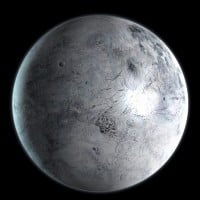 Eris is a dwarf planet located in the scattered disk, a region of the solar system beyond Neptune. It was discovered in 2005 by astronomer Mike Brown and his team, and its discovery led to a redefinition of what constitutes a planet, eventually resulting in the reclassification of Pluto as a dwarf planet. Eris is named after the Greek goddess of strife and discord. It is the ninth-largest object orbiting the Sun and has one known moon, Dysnomia.
Eris is a dwarf planet located in the scattered disk, a region of the solar system beyond Neptune. It was discovered in 2005 by astronomer Mike Brown and his team, and its discovery led to a redefinition of what constitutes a planet, eventually resulting in the reclassification of Pluto as a dwarf planet. Eris is named after the Greek goddess of strife and discord. It is the ninth-largest object orbiting the Sun and has one known moon, Dysnomia.
 Eris is a dwarf planet located in the scattered disk, a region of the solar system beyond Neptune. It was discovered in 2005 by astronomer Mike Brown and his team, and its discovery led to a redefinition of what constitutes a planet, eventually resulting in the reclassification of Pluto as a dwarf planet. Eris is named after the Greek goddess of strife and discord. It is the ninth-largest object orbiting the Sun and has one known moon, Dysnomia.
Eris is a dwarf planet located in the scattered disk, a region of the solar system beyond Neptune. It was discovered in 2005 by astronomer Mike Brown and his team, and its discovery led to a redefinition of what constitutes a planet, eventually resulting in the reclassification of Pluto as a dwarf planet. Eris is named after the Greek goddess of strife and discord. It is the ninth-largest object orbiting the Sun and has one known moon, Dysnomia. It's easy to know these with just simple classical mechanics: Kepler's Third Law. The orbital period squared and the average orbital radius cubed are proportional, thus, the furthest out bodies have the longest years.
And for the record, more dwarf planets have been discovered since the publication of your source. The recently discovered V774104 is two to three times further out than Pluto, and thus is estimated to have a year of 1046 Earth years.
2 Makemake
3 Pluto
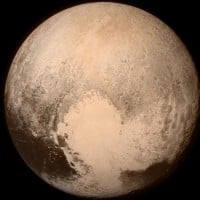

4 Neptune
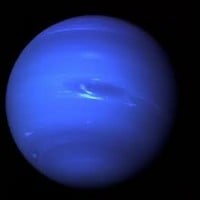

5 Uranus
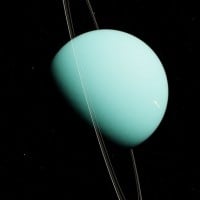 Uranus is the seventh planet from the Sun in our solar system. It was discovered by William Herschel in 1781, making it the first planet to be discovered with a telescope. Unique among the planets, Uranus has an axial tilt of about 98 degrees, causing it to rotate on its side. Composed mainly of hydrogen, helium, and a small amount of methane, the planet is known for its pale blue color due to the methane in its atmosphere.
Uranus is the seventh planet from the Sun in our solar system. It was discovered by William Herschel in 1781, making it the first planet to be discovered with a telescope. Unique among the planets, Uranus has an axial tilt of about 98 degrees, causing it to rotate on its side. Composed mainly of hydrogen, helium, and a small amount of methane, the planet is known for its pale blue color due to the methane in its atmosphere.
 Uranus is the seventh planet from the Sun in our solar system. It was discovered by William Herschel in 1781, making it the first planet to be discovered with a telescope. Unique among the planets, Uranus has an axial tilt of about 98 degrees, causing it to rotate on its side. Composed mainly of hydrogen, helium, and a small amount of methane, the planet is known for its pale blue color due to the methane in its atmosphere.
Uranus is the seventh planet from the Sun in our solar system. It was discovered by William Herschel in 1781, making it the first planet to be discovered with a telescope. Unique among the planets, Uranus has an axial tilt of about 98 degrees, causing it to rotate on its side. Composed mainly of hydrogen, helium, and a small amount of methane, the planet is known for its pale blue color due to the methane in its atmosphere.
6 Saturn
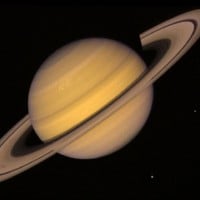 Saturn is the 6th planet from the Sun, it is the second-largest and has the most moons. One year on Saturn is 29 Earth years (10,756 Earth days). Saturn is known for its rings. Saturn is a gas giant, so there is no solid surface on the planet. It is also almost 1 billion miles away from the Sun. The Cassini-Huygens spacecraft was sent to Saturn on October 15, 1997, and arrived at Saturn on July 1, 2004. Saturn was discovered in 1610 by Galileo Galilei.
Saturn is the 6th planet from the Sun, it is the second-largest and has the most moons. One year on Saturn is 29 Earth years (10,756 Earth days). Saturn is known for its rings. Saturn is a gas giant, so there is no solid surface on the planet. It is also almost 1 billion miles away from the Sun. The Cassini-Huygens spacecraft was sent to Saturn on October 15, 1997, and arrived at Saturn on July 1, 2004. Saturn was discovered in 1610 by Galileo Galilei.
 Saturn is the 6th planet from the Sun, it is the second-largest and has the most moons. One year on Saturn is 29 Earth years (10,756 Earth days). Saturn is known for its rings. Saturn is a gas giant, so there is no solid surface on the planet. It is also almost 1 billion miles away from the Sun. The Cassini-Huygens spacecraft was sent to Saturn on October 15, 1997, and arrived at Saturn on July 1, 2004. Saturn was discovered in 1610 by Galileo Galilei.
Saturn is the 6th planet from the Sun, it is the second-largest and has the most moons. One year on Saturn is 29 Earth years (10,756 Earth days). Saturn is known for its rings. Saturn is a gas giant, so there is no solid surface on the planet. It is also almost 1 billion miles away from the Sun. The Cassini-Huygens spacecraft was sent to Saturn on October 15, 1997, and arrived at Saturn on July 1, 2004. Saturn was discovered in 1610 by Galileo Galilei.
7 Jupiter
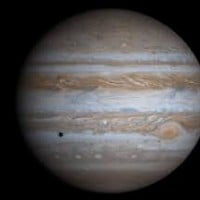

8 Ceres
9 Mars
10 Earth